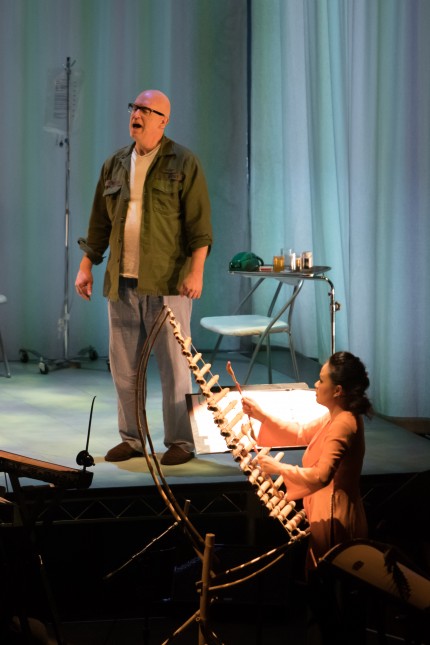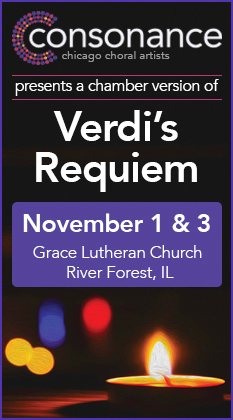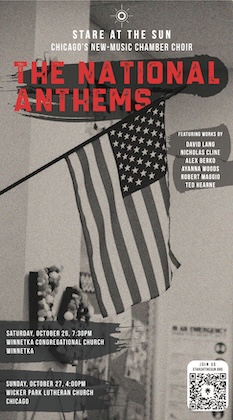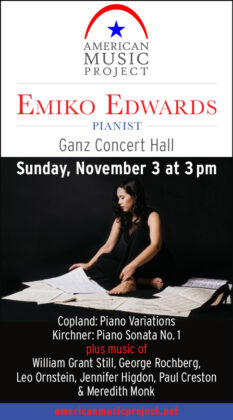Uneven “My Lai” proves a work in progress at Harris Theater

Near the end of My Lai, former Vietnam helicopter pilot Hugh Thompson—ensconced in a cancer ward and visibly exhausted—picks up the phone to call his ex-door gunner, Larry Colburn. Both men played a pivotal role in ending the infamous My Lai Massacre of 1968, in which Vietnamese civilians were killed by American soldiers. The year is now 2005, and Thompson is nearing the end of his life. Haunted by memories, his call is that of a man seeking catharsis.
Alas, Colburn doesn’t pick up, leaving Thompson to make small talk with the person who does: “Yeah, I’m still in the hospital. No, it’s not looking good. But you know what they say— nobody lives forever.”
Thompson died the following year, in 2006, but his story lives on in My Lai, an operatic monodrama for tenor, string quartet, and Vietnamese instruments which had its staged premiere Friday night at the Harris Theater.
For My Lai composer and Stanford professor Jonathan Berger, the premiere has been a long time coming. Profoundly affected by the My Lai Massacre as a teenager, he learned of Thompson’s story in adulthood and wrote a piano concerto dedicated to his heroism in 2001. In adapting Thompson’s story for the stage, he enlisted librettist Harriet Scott Chessman and filmmaker Mark DeChiazza, as well as the Kronos Quartet, Vietnamese instrumentalist Vân-Ánh Võ, and tenor Rinde Eckert, who co-directed along with DeChiazza.
The Harris Theater performance of My Lai comes three months after a concert version was premiered at Stanford University. Separated into three acts, or “landings,” My Lai depicts Thompson in the final months of his life, tormented by the innocents he couldn’t save that fateful day in 1968.
Composed as a stand-alone piece for the Kronos Quartet and Võ, the opening Lullaby acted as the opera’s overture and offered some of the most potent music of the evening. Kronos’ pendular shifts from frenzied atonality to major-key serenity was overlaid by the ethereal, theremin-like voice of Võ’s đàn bầu (a one-stringed zither, here rigged with electronic amplification and occasionally bowed).
Recorded tracks were also integrated to great effect: The Lullaby opened with a mournful duet between a ghostly Vietnamese vocalist and the đàn bầu, and later, drifting harmonies settled to reveal J.B. Lenoir’s 1960s antiwar anthem “Vietnam Blues,” which dissipated as unobtrusively as it had appeared.
From the Lullaby onwards, Võ was a dominant musical presence, in complete command of multiple instruments. In her arsenal were not only the đàn bầu, but also the đàn tranh (a multi-stringed zither), t’rưng (a skeletal-looking bamboo xylophone), and a multitude of metal gongs, crafted from salvaged American artillery shells.
In the central role of Hugh Thompson, Eckert’s performance proved mixed. Technically, the tenor was a more-than-capable vocalist with an assured delivery and timbral warmth.
But dramatically, his performance as Hugh Thompson felt more like an oratorio solo than a theatrical portrayal. The horror of Thompson’s experience was sung solidly but the emotion was not conveyed; Eckert’s voice seemed just as unmoved as his face while relaying traumatic moments—Thompson’s first glimpse of the carnage from his helicopter, for instance, or his rescue mission to save a Vietnamese boy the same age as his son.
For all its searing source material, My Lai runs the risk of being a little bland musically without distinct peaks. Though the Kronos Quartet gave a committed performance, Berger’s score mostly relegates atmospheric, repetitive figures to the strings, which—along with Võ’s solos—are brought to the forefront in the interludes separating each “landing.” Though probably intended to give audiences a breather from the intensity of Eckert’s monologues, the resulting effect felt more like dead space than anything.
DeChiazza’s video projections were likewise uneven. Though the decision to eschew graphic imagery in favor of more subtle images was a wise one, the complete lack of any historical images from My Lai, or even Vietnam, necessitated more generic stand-ins that had a heavy-handed effect: the silhouette of a soldier, an eruption of flames, the raising and firing of a gun.
Yet My Lai still presents emotional heft despite these shortcomings. Hair-raising moments abound in Chessman’s libretto: Thompson’s orders to Colburn and Andreotta to commit friendly fire if necessary, the twisted game show in the second act, and Thompson’s final, grieved musing that he “always wanted to fly.”
As it happens, Berger only got the chance to speak to Thompson once, through a phone call arranged by Thompson’s biographer. “I understand that you wrote a piece for me,” Thompson had said, referring to Thompson’s piano concerto. “I don’t know a lot about music, but it seems to me it’s sort of like someone makes a sculpture, but in sound.”
In the end, Berger’s homage to Thompson has all the right ingredients, but would benefit from a bit more sanding and chisel work to make its full effect.
Posted in Performances




